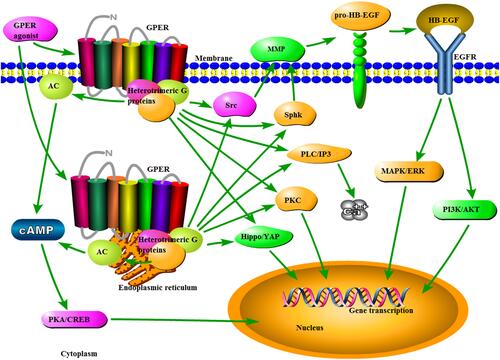Figures & data
Table 1 Summary of the Role of GPER in Various Digestive System Malignancies
Table 2 Summary of the Type of GPER Ligands
Figure 1 Schematic diagram of the GPER signaling pathways. Once the binding of the agonist is generated, GPER can induce heterotrimeric G proteins, resulting in multiple downstream events, including AC/cAMP/PKA/CREB, Src, and SphK. MMP, activated by the latter two signals, may cleave pro-HB-EGF and liberate free HB-EGF, which in turn transactivates EGFR. Subsequently, EGFR activation appears to be involved in the activation of MAPK/ERK and PI3K/AKT pathways. Additionally, the additional signals activated by GPER include PLC/IP3/calcium mobilization, PKC, and Hippo/YAP signaling.

